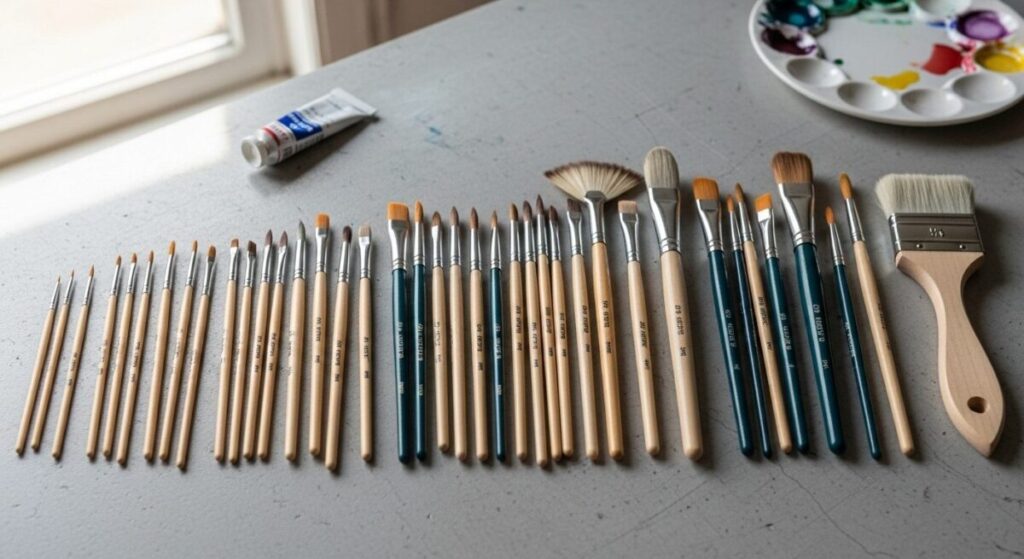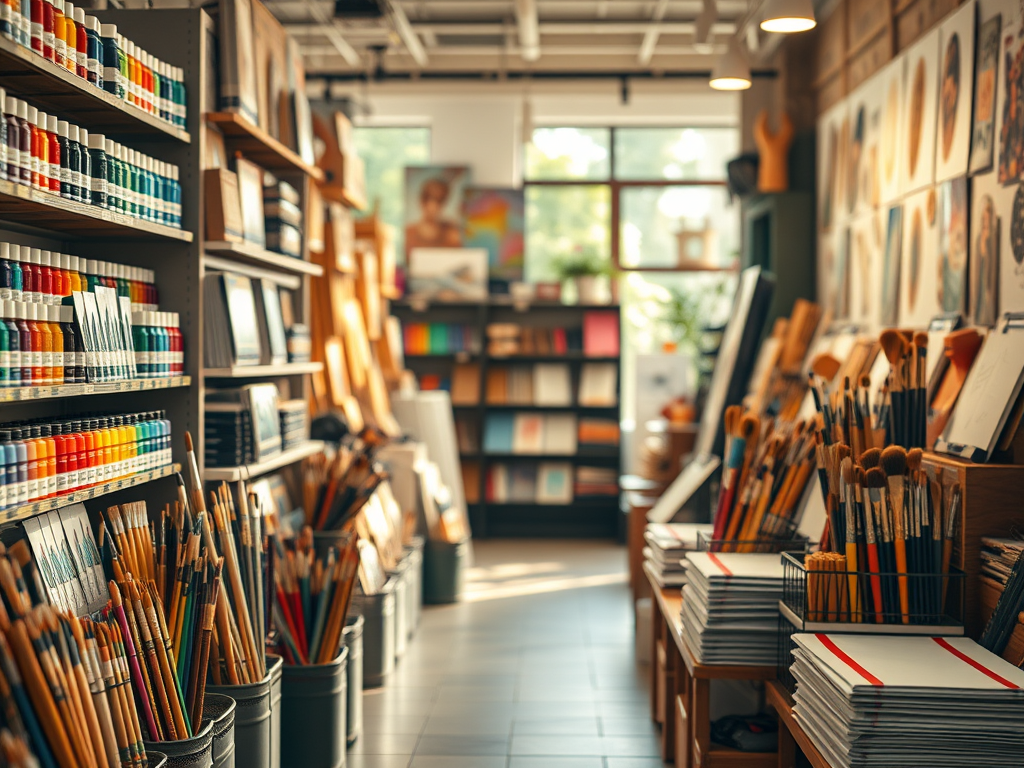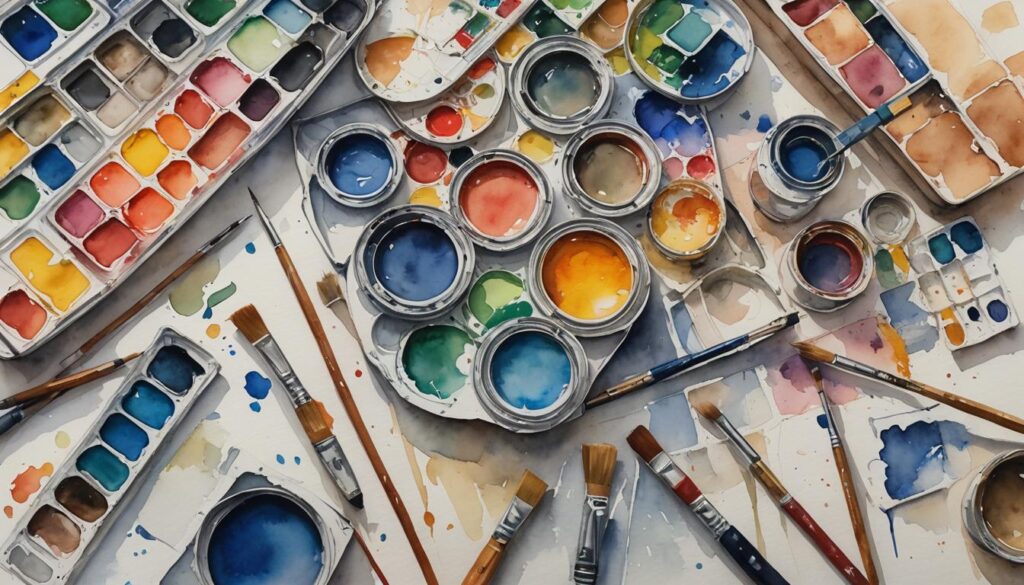Starting your artistic journey is exciting, but choosing the right paint brushes for beginners can feel overwhelming. With so many options available, how do you know which brushes will help you create your best work? This guide will walk you through everything you need to know about selecting and using paint brushes as a beginner artist.

Why the Right Paint Brushes Matter for Beginners
Just like a chef needs proper knives, artists need quality paint brushes to develop their skills. The right paint brushes for beginners can make learning easier and more enjoyable. They help you apply paint smoothly, create various effects, and build confidence in your artistic abilities.
Types of Paint Brushes Every Beginner Should Know
Round Brushes
Round brushes are the workhorses of any beginner’s art kit. These versatile brushes come to a fine point and are perfect for:
- Creating fine lines and details
- Basic sketching and outlining
- Filling in smaller areas
- Adding finishing touches to your artwork
A quality round brush for beginners should hold its shape well and respond to light pressure changes as you paint.
Flat Brushes
Think of flat brushes as your painting equivalent of a butter knife – they’re great for spreading paint evenly across your canvas. These brushes excel at:
- Covering large areas quickly
- Creating straight edges and borders
- Blending colors together
- Making bold, dramatic strokes
Filbert Brushes
Filbert brushes combine the best features of round and flat brushes. Their rounded edges make them perfect for:
- Soft blending
- Creating natural-looking curves
- Adding highlights and shadows
- Painting organic shapes like flowers or clouds
Best Materials for Beginner Paint Brushes
Synthetic Bristles
For beginners, synthetic bristles are often the best choice because they:
- Cost less than natural bristles
- Hold their shape well
- Work great with acrylic paint
- Are easier to clean and maintain
Natural Bristles
While more expensive, natural bristle brushes offer unique benefits for oil painting:
- Better paint absorption
- Smoother application
- More durability with proper care
- Superior blending capabilities
Recommended Brush Sizes for Beginners
Starting with a basic set of brush sizes helps you learn different techniques without getting overwhelmed:
- Large (sizes 12-16): For backgrounds and large areas
- Medium (sizes 6-10): For general painting and basic details
- Small (sizes 0-4): For fine details and finishing touches

Caring for Your Paint Brushes
Taking care of your paint brushes helps them last longer and perform better:
Cleaning Tips
- Clean brushes immediately after use.
- Use appropriate brush cleaner for your paint type.
- Never leave brushes standing in water.
- Reshape bristles while wet.
- Store brushes horizontally or upright with bristles up.
Common Mistakes to Avoid
- Letting paint dry in the bristles
- Using hot water to clean brushes
- Storing brushes bristle-down
- Pushing brushes too hard against the canvas
Best Brush Sets for Different Paint Types
Acrylic Paint Brushes for Beginners
Acrylic painters should look for:
- Synthetic bristles
- Medium stiffness
- Good spring and snap
- Durable ferrules
Watercolor Brushes for Beginners
Watercolor artists need:
- Soft, absorbent bristles
- Good point retention
- Synthetic or natural hair options
- Seamless ferrules
Oil Paint Brushes for Beginners
Oil painters should consider:
- Natural bristles
- Stronger ferrules
- Heat-treated handles
- Various tip shapes
Budget-Friendly Options for Beginners

Buy Brushes
Quality brushes don’t always mean expensive brushes. Look for:
- Student-grade brush sets
- Synthetic options from reputable brands
- Multi-brush starter kits
- Sales at art supply stores
When to Upgrade Your Paint Brushes
You’ll know it’s time to upgrade your paint brushes when:
- You’ve mastered basic techniques
- Your current brushes limit your abilities
- You’re ready to experiment with new styles
- You want to try more advanced techniques
Signs of Quality Paint Brushes
Whether buying budget or premium brushes, look for these quality indicators:
- No loose bristles
- Secure ferrules
- Smooth handles
- Consistent brush shape
- Good spring in the bristles
Final Tips for Choosing Paint Brushes as a Beginner
Remember these key points when selecting your first set of paint brushes:
- Start with a basic set of essential shapes.
- Choose brushes appropriate for your paint type.
- Consider your budget and painting goals.
- Focus on quality over quantity.
- Test brushes when possible before buying.
By choosing the right paint brushes for beginners and taking good care of them, you’ll set yourself up for success in your artistic journey. Don’t feel pressured to buy the most expensive brushes – start with quality basics and upgrade as your skills develop.
FAQs: Paint Brushes for Beginners
1. What are the best paint brushes for a beginner?
For beginners, it’s recommended to start with a versatile set of synthetic brushes. Round, flat, and filbert brushes are essential shapes that will allow you to experiment with various techniques, from detailed lines to broad strokes and blending. Synthetic bristles are affordable, durable, and work well with acrylic paints, making them an excellent choice for those new to painting.
2. What brush sizes should I start with?
A good starting set for a beginner includes a range of sizes:
- Large (size 12-16): Ideal for painting backgrounds and covering large areas of the canvas quickly.
- Medium (size 6-10): Perfect for general painting and adding basic details to your artwork.
- Small (size 0-4): Essential for fine details, delicate lines, and adding the finishing touches to your masterpiece.
3. What is the difference between synthetic and natural bristle brushes?
- Synthetic Bristles: Made from man-made materials like nylon or polyester, these brushes are a great choice for beginners. They are more affordable, easier to clean, and work well with water-based paints like acrylics. They are durable and hold their shape well.
- Natural Bristles: Made from animal hair (like hog or sable), these brushes are more expensive and are traditionally used with oil paints. They can hold more paint and can create a smoother application, but require more careful cleaning and maintenance.
4. How do I clean my paint brushes properly?
Proper cleaning will extend the life of your brushes. Follow these simple steps:
- Clean immediately after use: Don’t let paint dry on the bristles.
- Use the right cleaner: Use water and soap for acrylics, and solvents for oil paints.
- Rinse thoroughly: Make sure all the paint and cleaner is removed.
- Reshape the bristles: Gently reshape the bristles with your fingers while they are still damp.
- Dry and store correctly: Store brushes horizontally or upright with the bristles pointing up to maintain their shape.
5. What are the best brushes for different types of paint?
- Acrylics: Medium-stiffness synthetic brushes are the best choice for acrylics. They have the right amount of spring and are durable enough to handle the quick-drying nature of acrylic paint.
- Watercolors: Soft, absorbent brushes are needed for watercolors. Both synthetic and natural hair brushes are good options.
- Oils: Stiffer natural bristle brushes, such as those made from hog hair, are traditionally used for oil painting. They hold the thick paint well and can create a variety of textures.
6. Where can I find good, budget-friendly paint brushes for beginners?
You don’t need to spend a lot of money to get quality brushes. Look for:
- Student-grade brush sets: These offer good quality at an affordable price.
- Reputable synthetic brush brands: Many well-known brands offer excellent synthetic options that are perfect for beginners.
- Multi-brush starter kits: These kits provide a variety of shapes and sizes, giving you everything you need to get started.
- Sales at art supply stores: Keep an eye out for discounts and promotions at your local art supply store.




